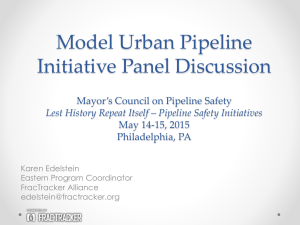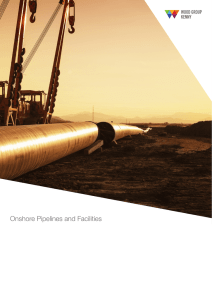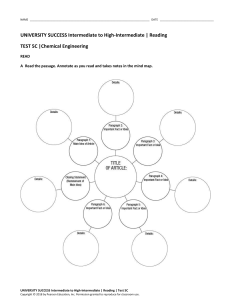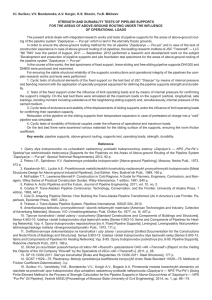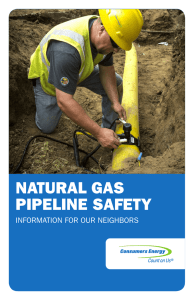Gas Pipeline Monitoring in the Delaware River Watershed 1
advertisement
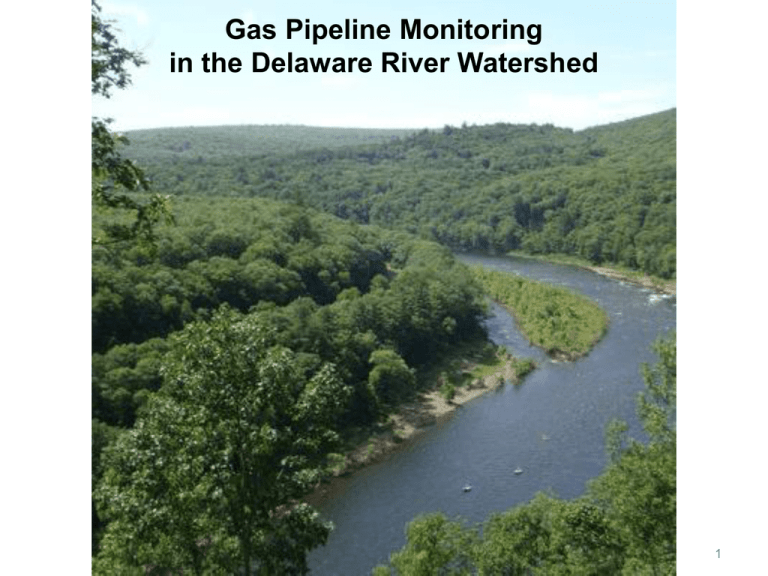
Gas Pipeline Monitoring in the Delaware River Watershed 1 Host Organization: Delaware Riverkeeper Network Maya van Rossum Faith Zerbe Joe Zenes 2 Overview of Pipelines 3 4 During Construction Monitoring 5 Pipeline Cut Through Public Lands This pipeline path currently under construction passes through High Point State Park in New Jersey. Often public lands had intact and healthy habitat and mature forests before pipeline cuts occur. Conversion of Forested Landscapes to ROW Pipelines often cut through forests and steep slopes which requires much technical oversight to ensure measures are required and used to limit impacts. (Pike County, 2013) Sediment Discharged to Wetlands Compost filter socks are topped by sediment-laden water causing large discharge of sediment to the adjacent high quality wetland outside the pipeline ROW. Overwhelmed and failing Erosion & Sedimentation Controls This once forested slope dominated by underground springs and wetlands is a challenging location for a pipeline path with continual issues with stabilization of soils and control of water. Waterbody crossings are challenging Wetlands, streams, and spring crossings are sensitive areas that are challenging places to site pipelines. Contaminated well water due to pipeline construction Pipelines nearby residences can impact well water like in this case that occurred in New Jersey during pipeline construction, June 2013. Post Construction Monitoring Lagging reclamation and recovery Nine months after this new pipeline began carrying gas, land surface impacts adjacent a high quality tributary to the Delaware River including soil compaction and lack of vegetation growth keep this site in temporary restoration phase. 13 14 15 Mid Atlantic Volunteer Monitoring Conference National Conservation Training Center Shepherdstown, WV 16



